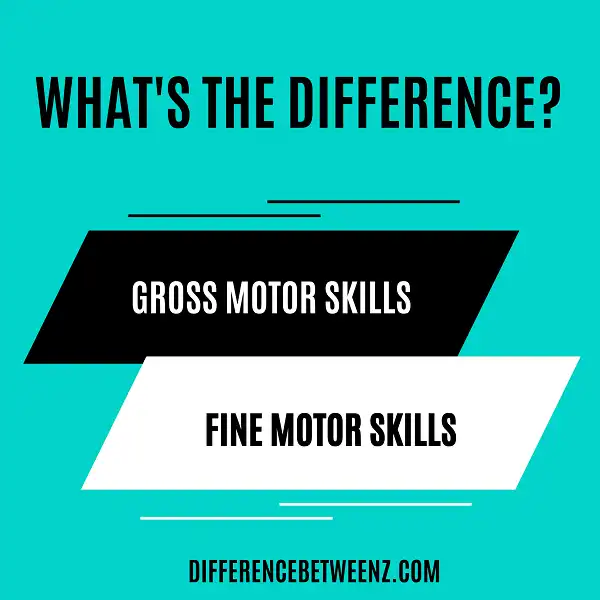When you think of activities that involve using your hands and muscles, what comes to mind? Do you think of something that is fun, like playing catch with a ball or painting a picture? Or do you think of something more challenging, like tying your shoes or doing a puzzle? All of these activities require different levels of hand and muscle coordination, which are known as gross and fine motor skills. Let’s take a closer look at the differences between these two types of skills.
What are Gross Motor Skills?
Gross Motor Skills are a fundamental set of movements that allow us to interact with and explore our environment. These skills involve the use of large muscle groups and are typically developed during childhood. Gross Motor Skills can be divided into two broad categories: Locomotor Skills and Non-Locomotor Skills. Locomotor Skills involve movements that take us from one place to another, such as walking, running, and jumping. Non-Locomotor Skills involve movements that change our position or shape, such as stretching, bending, and twisting. Gross Motor Skills are essential for daily living, and can also provide a foundation for more complex skills later in life.
What are Fine Motor Skills?
Fine motor skills are the ability to control small muscles in the hands and fingers in order to perform tasks such as writing, buttoning a shirt, or using scissors. Fine motor skills develop throughout childhood as a child gains strength and coordination in their hands and fingers. Many children begin to develop fine motor skills around 18 months of age when they start to learn how to pick up small objects. Fine motor skills continue to develop through school-age years as children learn more complex tasks such as tying shoelaces, doing buttons up, or cutting with scissors. Some children may need extra help to develop their fine motor skills if they have difficulty with tasks such as holding a pencil or using scissors. There are many activities that can help improve fine motor skills such as puzzles, lacing shoes, drawing, and arts and crafts. Fine motor skills are an important part of daily life and enable children to perform tasks independently.
Difference between Gross and Fine Motor Skills
Gross motor skills are the abilities usually acquired during childhood as a baby learns to sit, stand, walk, and run. Gross motor skills are large muscle movements involving the entire body. they’re also sometimes called “ball-and-socket” skills because they use the large joints in the body, such as the hips and shoulders. Fine motor skills are the ability to use small muscles, such as muscles in the fingers and toes. These skills are important for tasks such as writing, drawing, and using utensils. Babies begin to develop fine motor skills at birth as they learn to grasp and hold objects. These skills continue to develop throughout childhood and into adolescence. By adulthood, most people have refined their fine motor skills and can perform complex tasks such as sewing or playing the piano.
Gross motor skills tend to develop before fine motor skills. This is because gross motor skills require less coordination and control than fine motor skills. For example, a baby may learn to sit up before she learns to pick up a small object with her fingers. Most children develop gross motor skills within the same time frame, but there can be some variations. For example, some children may learn to walk at 9 months while others may not walk until they’re 15 months old. Fine motor skill development also varies from child to child. Some children may start drawing by age 2 while others may not start until age 4. Developmental delays in either gross or fine motor skills can be a sign of a more general developmental delay or a specific learning disability such as dyspraxia. However, many children who have delayed Gross or fine motor development catch up by school age.
Conclusion
Gross motor skills are those that involve the use of the large muscles in your body, such as when you walk or run. Fine motor skills, on the other hand, require more precision and the use of smaller muscles, such as those in your fingers. When it comes to developing gross and fine motor skills in children, there is a lot of overlap between the two. However, each type of skill requires different types of activities for development. Here we’ve outlined some tips for helping your child develop their gross and fine motor skills.


